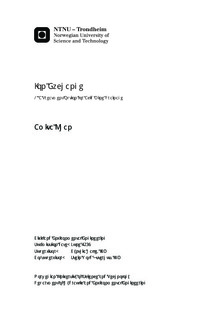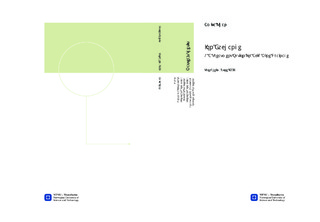| dc.description.abstract | The sorption of heavy metals from Acid Mine Drainage (AMD) by using clinoptilolite, a natural zeolite, was studied in this thesis. The behavior of clinoptilolite, as an ion exchanger, was studied to see if the concentration of iron, copper, zinc, and manganese could be reduced to acceptable environmental standards. Folldal works, Løkken works, and Røros copper works were the mines investigated during this study. However, experiments were conducted on the AMD from Folldal and Løkken works. From the kinetic experiments, the percent adsorption and distribution ratio (Kd) were determined as a function of heavy metal concentration. The percent adsorption showed that the ion exchange process followed three stages; (1) surface exchange with a high adsorption rate, (2) the inversion stage, and (3) moderate adsorption. Higher concentrations of clinoptilolite had a better treatment effect on iron, copper and zinc. The results also indicated competition between iron and manganese, where iron ions occupied the adsorption sites of manganese ions when all the surface sites are taken. The amount of manganese, unlike the other metals, increased with time during the experiment. The distribution ratio showed different results for each metal. In general for iron, copper, and zinc there was an increase in the distribution ratio as the heavy metal concentration decreased. This indicated that all the metals were to some extent exchanged with the cations of the clinoptilolite. The AMD from both areas contained large concentrations of total organic carbon (TOC), and it is assumed that fouling of the clinoptilolite could occur. Equilibrium isotherms were determined and the results showed that neither the Langmuir nor the Freundlich isotherm have a good fit to the experimental data. The results showed that the adsorption capacity of clinoptilolite decreased as a result of surface coverage, and the selectivity sequence was determined to be Fe3+ > Cu2+ > Zn2+ > Mn2+ for both Folldal and Løkken. Ion exchange with clinoptilolite reduced the amount of heavy metals from the AMD, although the final concentrations were considerably higher than the set requirement of 10 µg Cu/L. Precipitation as an initial step before ion exchange was therefore tested. The results showed a better removal of iron, copper and zinc with 99.6, 97.3, and 37.7 % from Folldal, and 98.3, 98.7, and 59.9 % from Løkken, respectively. Even though the use of precipitation gave much better results, the final concentrations of the heavy metals were still above the acceptable environmental standard. | nb_NO |

